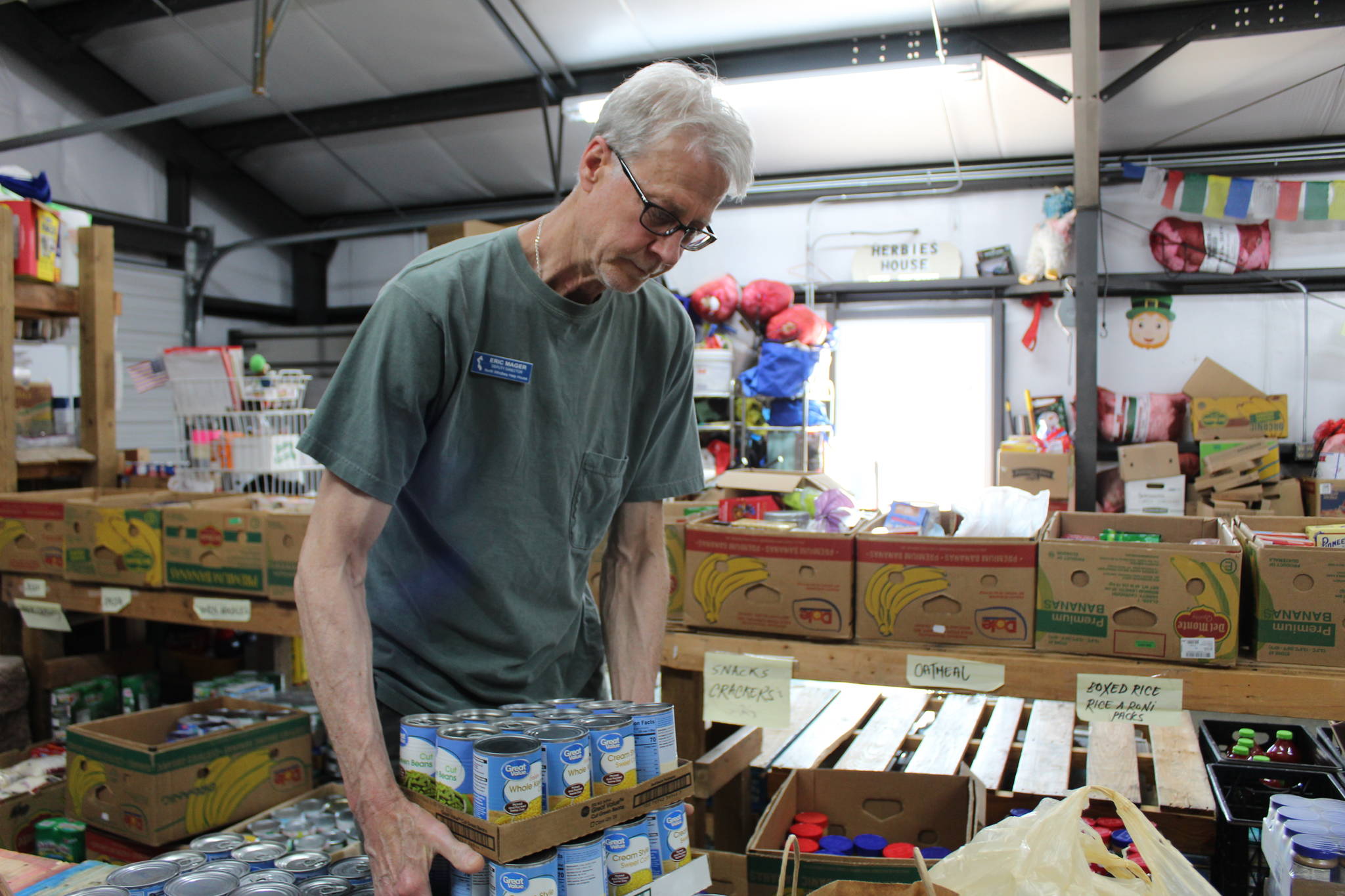COVID-19 made the last year an interesting one for Whidbey Island food banks, which saw notable changes in both the donations they received and the populations they served.
The directors of the North Whidbey Help House in Oak Harbor, Gifts from the Heart Food Bank in Coupeville and Good Cheer Food Bank and Thrift Stores in South Whidbey all said they were awed by Whidbey residents’ generosity during the crisis. As the pandemic raged on, donations came pouring in all over the island.
“It was amazing, the amount of donations that we got in the last 12, 14 months,” said Jean Wieman, Help House executive director.
“I think people are more aware, because we saw people that we’ve never seen before dropping off donations,” she said.
The Help House, whose annual “Christmas in July” food drive is currently ongoing, wasn’t the only nonprofit on Whidbey that saw an uptick in charitable giving during the pandemic. Good Cheer Food Bank and Thrift Stores executive director Carol Squire said Good Cheer also received an unprecedented amount of donations over the past year.
Seeing donations coming in from organizations and individuals alike was “heartwarming,” Squire said.
Those donations helped keep Good Cheer going when its main source of revenue — its thrifts stores — were closed during the pandemic.
Coupeville Mayor Molly Hughes, who is also president of the Gifts from the Heart board of directors, reported a similar trend at the Coupeville food bank. She said so far this year, donations are still higher than the pre-pandemic norm.
“I just can’t say enough about how our community supports our food bank, and I know the other two food banks on the island feel the same way,” Hughes said. “There’s just never a time where we can’t get the help that we need.”
The increase in generosity from community members paralleled an increase in government safety nets for people facing pandemic-induced financial hardship. Wieman, Squire and Hughes all said their customer bases saw significant changes during the pandemic, due in large part to the increased access to government financial help.
“Since the safety net has been improved (stimulus, expanded unemployment and shared work, expanded EBT (food stamp) benefits and rental assistance) the numbers of people feeling that they need supplemental food from food banks has declined,” Squire wrote in an email.
Wieman said the number of people receiving food from Help House dropped by 30-40 percent after pandemic benefits started rolling out from the state and federal governments. Squire also noted a decrease in the demand for service at Good Cheer.
Hughes said Gifts from the Heart saw a 10 percent increase in total households served from 2019 to 2020, but only because the rush for assistance was so great at the beginning of the pandemic. As the year wore on, her customers dropped off, too, and are currently down 8 percent from this same period last year.
The populations in need of assistance also changed. Squire said that while a lot of Good Cheer regulars hung back from the charity so that others could have access to needed supplemental food, she has also seen “an unprecedented increase in new families.” She is not sure why this shift has occurred.
At North Whidbey Help House, more seniors and singles have come for assistance. Wieman said this is because there were more COVID-19 benefits for families with children at home than for others.
As the stimulus money runs out, however, and as other pandemic help expires, the directors anticipate their organizations will see a return to pre-pandemic service levels.
Pandemic or not, there are many families on Whidbey Island that consistently require assistance to meet their basic needs, whether that assistance comes from local nonprofits or the government.
Many of these families belong to a group United Way calls “ALICE.” The acronym stands for “Assets Limited, Income Constrained, Employed.”
The threshold for this group is United Way’s “Household Survival Budget,” or the bare minimum amount of money a family needs to meet their basic needs.
The Survival Budget does not account for things like savings, car repairs or holiday gifts.
Squire said ALICE families are likely renters who have jobs but still don’t make enough to keep up with Washington’s high cost of living.
As of 2018, 33 percent of Washington households fell below the ALICE threshold, including the 10 percent of households below the federal poverty line.
For context, in 2018 the federal poverty level for a single adult was $12,140 per year or less. The ALICE bare minimum “Household Survival Budget” for a single adult living in Washington was nearly double that at $22,524 per year.
That same year, the federal poverty level for a four-person household was $25,100 per year, while the ALICE Household Survival Budget for a family with two adults, an infant, and a four-year-old was $72,600.
United Way reported that in 2018, 27 percent of households in Island County fell below the ALICE threshold. This number includes households below the federal poverty level.
While Island County tied with Kitsap County for having the lowest percentage of households below the ALICE threshold in the state, that number still represents over 9,000 local households which, according to the Household Survival Budget, were not making enough to consistently provide the bare minimum necessities of living.
According to Squire, the increase of ALICE households and the “shrinking middle class” is a problem not just in Island County or Washington but all over the United States. As the cost of basic necessities, such as childcare, rent and groceries climbs ever upward, leaving wages in the dust, more and more families are struggling to keep up with their expenses.



